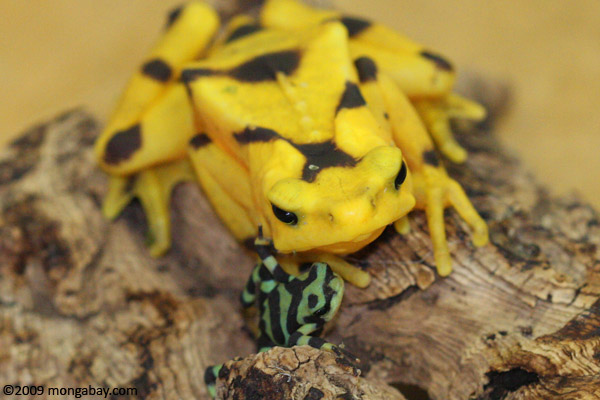
Mother and baby Panamanian golden toads in a secure captive breeding facility. Photo taken in 2006 by Rhett A. Butler
Harlequin toads (Atelopus sp) have been decimated by the outbreak of chytridiomycosis, a deadly fungal disease, across Latin America. Between the 1980s and 1990s, almost two-thirds of the 110 known harlequin frog species went extinct. Scientists say climate change and other habitat perturbations may be making frogs more vulnerable to infection.
The Panamanian golden toad (Atelopus zetecki) may have been a victim of chytridiomycosis. Recent surveys have failed to turn up the species in its native forest habitat in Panama.
Until it disappeared, the species was considered a good luck charm in Panama. Like other Harlequin toads, Panamanian golden toad communicates by waving its hands.
Captive populations of the Panamanian golden toad are now being bred in secure facilities. Scientists hope to one day reintroduce the species to the wild once the chytrid fungus (Batrachochytrium dendrobatidis) has been eliminated.
RELATED
Gone: a look at extinction over the past decade

(01/03/2010) No one can say with any certainty how many species went extinct from 2000-2009. Because no one knows if the world’s species number 3 million or 30 million, it is impossible to guess how many known species—let alone unknown—may have vanished recently. Species in tropical forests and the world’s oceans are notoriously under-surveyed leaving gaping holes where species can vanish taking all of their secrets—even knowledge of their existence—with them.














